#Cornstarch Clamshell Box
Explore tagged Tumblr posts
Text
Cornstarch Clamshell Boxes: The Eco-Friendly Revolution in Takeout Packaging
Plastic takeout containers might soon become a thing of the past—and it’s not just because of environmental guilt. It’s because smarter, greener, and better-designed options are taking over. One such standout? The Cornstarch Clamshell Box.
In a world where eco-conscious decisions define modern foodservice, clamshell containers made from renewable corn-based materials are turning heads and transforming takeout culture.
What Are Cornstarch Clamshell Boxes?
Let’s break it down. Cornstarch clamshell boxes are biodegradable food containers crafted from PLA or CPLA, bioplastics derived from fermented corn starch. Unlike plastic foam or PET trays, these boxes don’t linger in landfills for centuries. They’re designed to decompose under commercial composting conditions within 90–180 days.
They’re shaped just like traditional hinged takeout boxes—but with none of the toxic side effects.
And when sourced from trusted suppliers like Cornstarch Clamshell Box manufacturers, you get consistent performance and certification-compliant safety.
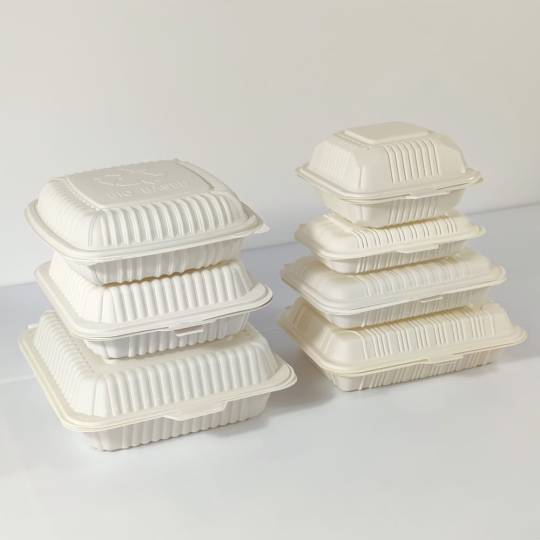
Why Restaurants and Cafés Are Switching in 2025
The reasons for the shift are more than just environmental. Here’s why businesses are replacing polystyrene and polypropylene containers with biodegradable corn starch packaging:
🌿 1. Plastic Bans Are Real—and Spreading Fast
The EU, India, and multiple U.S. states have outlawed single-use plastic food packaging.
Businesses that ignore these changes risk heavy fines or license revocation.
Compostable clamshells meet EN13432 and ASTM D6400 standards, qualifying as legal alternatives in regulated markets.
🧪 2. They’re PFAS-Free and Food-Safe
Unlike many paper-based containers that require chemical coatings, cornstarch clamshells are naturally grease-resistant. No “forever chemicals” required. That’s a major win for health-conscious consumers.
🔥 3. Heat-Resistant and Leakproof
These containers are built to handle real food—from hot rice bowls to saucy pastas. They maintain structural integrity, don’t collapse under steam, and won’t seep liquids after 15 minutes in the bag.
📦 4. They Look and Feel Premium
Smooth texture, matte finish, clean corners. These aren’t your average “eco” boxes. In 2025, packaging is as much about branding as it is about function. Cornstarch packaging upgrades the visual appeal of every meal.
Product Spotlight: 800ml Biodegradable Cornstarch Clamshell Food Box
If you're serving medium-sized portions or combo meals, the 800ml Biodegradable Cornstarch Clamshell Food Box is a perfect fit.
Ideal for salads, rice dishes, or meal kits
Leakproof, stackable, and microwave-safe
Fully compostable in industrial facilities
Neutral color tones to match minimalist branding
This box is a favorite among cloud kitchens, vegan cafés, and premium takeaway brands looking to reduce their carbon footprint without sacrificing style or function.
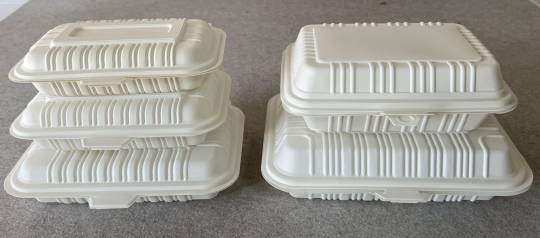
Composting, Explained
Many ask: Will this decompose in my backyard? Not always.
Cornstarch packaging typically needs industrial composting conditions—higher temperatures, humidity, and microbial activity—to break down efficiently. That’s why it’s important for cities and foodservice hubs to build out composting infrastructure alongside regulation.
Still, even if landfilled, cornstarch decomposes significantly faster than traditional plastics. And that’s a win in our book.
A Comparative Look: Cornstarch vs. Other Packaging Materials
Feature Cornstarch Clamshell Paper Containers PET Plastic Foam
Compostable✅ Yes (Industrial)✅ Some Types❌ No❌ No
Oil Resistance✅ Excellent⚠️ Needs coating✅✅
Heat Resistance✅ 100°C+ safe⚠️ Moderate✅⚠️ Can melt
PFAS-Free✅ Available❌ Often coated✅❌
Time to Biodegrade~3–6 months~2–5 months400+ years500+ years
Appearance (Brand Appeal)✅ Sleek/Modern✅ Varies✅ Glossy❌ Outdated
Cornstarch strikes the ideal balance of eco, performance, and presentation.
Ideal Use Cases for Cornstarch Takeout Containers
These aren’t just for health cafés. Here’s where cornstarch clamshells are winning in 2025:
Meal Prep Businesses – Durable, stackable, and portion-sized
Cloud Kitchens – PFAS-free containers for app-based deliveries
Salad Chains – Leakproof containers that work well with dressing
Eco Catering Services – Compostable presentation for events
College & Workplace Cafeterias – Large-scale switch to biodegradable lunch packaging
The versatility is unmatched. Whether hot or cold, dry or wet, cornstarch clamshells rise to the occasion.
Final Thoughts: It's Not Just Packaging. It's a Statement.
Packaging tells a story. In 2025, consumers are reading labels—and materials. They’re choosing brands that care.
By upgrading to Cornstarch Clamshell Box solutions, you're doing more than meeting policy requirements. You're:
Reducing landfill burden
Aligning with sustainability goals
Elevating your brand experience
Staying future-ready in a regulated world
Because when food leaves your kitchen, the container it’s in carries more than just your product—it carries your values.
#Cornstarch Clamshell Box#Biodegradable Cornstarch Packaging#Compostable Food Containers#Cornstarch Takeout Box#PFAS-Free Clamshell#Eco-Friendly Food Packaging#Biodegradable Hinged Food Boxes#Sustainable Takeout Packaging#Corn Starch Food Container Supplier#Compostable Clamshell Manufacturer
0 notes
Text
What material is used for packaging box?
Materials Used for Packaging Boxes
When selecting materials for packaging boxes, the choice largely depends on the type of product, required durability, and cost considerations. A Packaging Boxes Manufacturer and Supplier in Lagos typically works with several key materials to meet diverse packaging needs. Here’s a breakdown of commonly used materials:
1. Corrugated Cardboard
Structure: Consists of a fluted layer sandwiched between two linerboards. This construction provides strength and cushioning.
Uses: Ideal for shipping and storage, commonly used for shipping boxes, moving boxes, and product packaging.
Benefits: Offers excellent protection, is cost-effective, and can be recycled.
2. Paperboard
Structure: A single layer of thick paper, often used for lightweight packaging.
Uses: Commonly used for cereal boxes, cosmetic packaging, and small product packaging.
Benefits: Lightweight, easily customizable, and often used for retail packaging due to its good printability.
3. Kraft Paper
Structure: Made from wood pulp through a chemical process, known for its strength and durability.
Uses: Used for both inner and outer packaging, such as wrapping paper, paper bags, and protective liners.
Benefits: Eco-friendly, biodegradable, and provides a natural, rustic look.
4. Plastic
Types: Includes polyethylene (PE), polypropylene (PP), and polyvinyl chloride (PVC), among others.
Uses: Used for flexible packaging, blisters, and clamshells. Ideal for items that require a clear view or a seal-tight package.
Benefits: Water-resistant, durable, and versatile. Can be customized in terms of thickness, color, and finish.
5. Metal
Types: Includes aluminum and tin.
Uses: Commonly used for high-end product packaging such as food tins, cosmetic containers, and specialty packaging.
Benefits: Provides excellent protection, is tamper-evident, and has a premium feel.
6. Glass
Types: Includes clear, colored, and frosted glass.
Uses: Used for packaging liquids like beverages, perfumes, and pharmaceuticals.
Benefits: Offers high protection, an upscale appearance, and is recyclable.
7. Biodegradable and Compostable Materials
Types: Includes materials like cornstarch-based plastics, mushroom-based packaging, and recycled paper products.
Uses: Suitable for eco-friendly packaging solutions.
Benefits: Reduces environmental impact, often used for products targeting eco-conscious consumers.
8. Foam
Types: Includes polyethylene foam, polyurethane foam, and expanded polystyrene (EPS).
Uses: Provides cushioning and protection for delicate items.
Benefits: Lightweight, shock-absorbent, and effective for protecting fragile goods during shipping.
Conclusion
A Packaging Boxes Manufacturer and Supplier in Lagos offers a variety of materials tailored to different packaging needs, from robust corrugated cardboard to sophisticated metal and glass options. Understanding the properties and benefits of each material helps businesses choose the most suitable packaging solution for their products, ensuring protection, presentation, and cost-effectiveness.
0 notes
Text
Eco-Friendly Packaging Guide: Sustainable Choices for a Greener Future
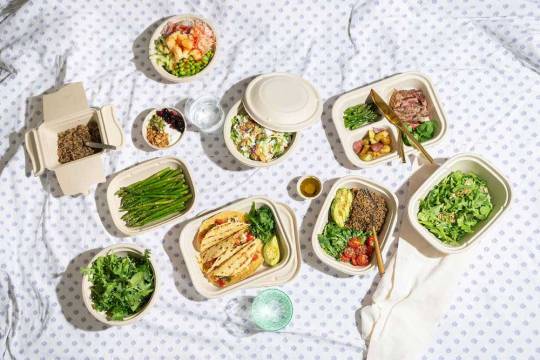
Introduction
As environmental awareness increases, businesses and consumers seek to minimize their negative impact on the planet, including through packaging. Fortunately, eco-friendly options now exist to address the significant contribution of packaging to pollution and waste. This guide will explain why sustainable packaging is important and offer options for restaurants.
1. Why Eco-Friendly Packaging Matters
The environmental impact of packaging is undeniable. From the extraction of resources to the disposal of waste, conventional packaging materials have far-reaching consequences. By choosing eco friendly packaging for food, we can significantly reduce these negative effects. Some key reasons why eco-friendly packaging matters include:
Reducing waste in landfills and oceans.
Lowering carbon emissions during production and transportation.
Conserving natural resources and reducing deforestation.
Supporting the circular economy by encouraging recycling and reusability.
2. Sustainable Packaging Materials
Consider these eco-friendly packaging options that offer unique benefits: a wide range of eco friendly packaging materials for food are available.
Recycled Materials: Using post-consumer or post-industrial recycled materials for packaging significantly reduces the demand for new resources. Common materials include cardboard, paper, and glass.
biodegradable clamshell packaging and Compostable Materials: These materials, such as PLA (polylactic acid), mushroom-based packaging, and certain types of biodegradable plastics, break down naturally in the environment, leaving no harmful residues.
Reusable Packaging: Encouraging customers to reuse packaging not only reduces waste but also enhances your brand's image as environmentally conscious. Consider packaging solutions like cloth bags, glass containers, or durable boxes.
Minimalist Packaging: Eliminating excess materials and opting for minimalist designs can reduce waste and packaging costs while still protecting your products effectively.
Plant-Based Plastics: Bioplastics made from renewable resources like cornstarch or sugarcane are a greener alternative to traditional petroleum-based plastics.
3. Eco-Friendly Packaging Practices
Choosing sustainable materials is just one part of the equation. Implementing eco-friendly packaging practices in your business can make a substantial difference. Here are some practical tips:
Right-Sizing: Select packaging that fits your product snugly to minimize excess materials and reduce the need for filler.
Eco-Friendly Inks: Use soy-based or water-based inks for printing on your packaging, as they are less harmful to the environment than traditional petroleum-based inks.
Recycling Programs: Establish recycling programs for your customers, making it easy for them to dispose of or return your packaging for proper recycling.
Sourcing Locally: Whenever possible, source packaging materials from local suppliers to reduce transportation emissions.
Encourage recycling or reusing your eco-friendly packaging by educating your customers about your commitment to sustainability.
4. Eco-Friendly Packaging Innovations
The world of eco-friendly packaging is continually evolving. Stay updated on the latest innovations that can make your packaging even more sustainable. Some emerging trends include:
Smart Packaging: Incorporating technology to reduce waste, such as QR codes for recycling information or smart expiration labels to prevent food waste.
Edible Packaging: Some companies are experimenting with edible packaging made from materials like rice, seaweed, or potatoes.
Packaging-Free Stores: In some regions, packaging-free stores are becoming increasingly popular, allowing customers to bring their containers and refill them with products.
Conclusion
Choosing a sustainable packaging company is crucial for sustainability. It benefits the environment, satisfies eco-conscious customers, and reduces a business's environmental footprint. Opt for a sustainable packaging company that uses sustainable materials and practices. Let's reduce packaging waste and create a greener world.
#sustainable packaging company#eco friendly food packaging#eco friendly containers#food packaging supplier
0 notes
Video
vimeo
Cornstarch Tableware Production.mp4 from MVI ECOPACK on Vimeo.
Our corn starch tableware is produced by fully automatic machines.
Corn Starch tableware is an environmentally friendly material and a pollution-free green product for human survival and environmental protection.
MVI ECOPACK provides corn starch clamshell/lunch box, corn starch plates, corn starch trays, corn starch bowl, corn starch cutlery, etc.
More products at: go2ecopack.com/cornstarch-tableware-c126620/
0 notes
Photo
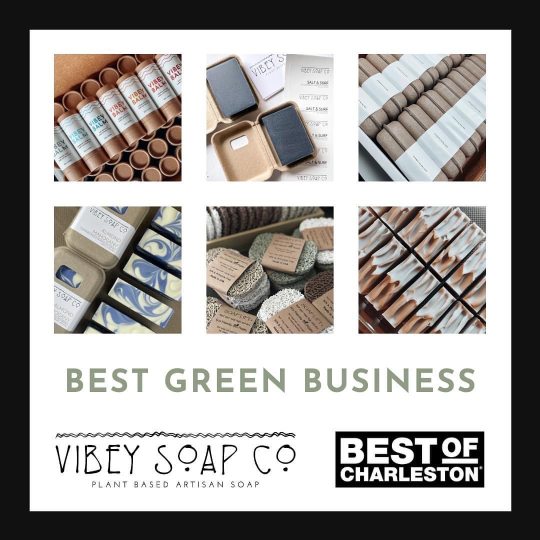
BEST OF CHARLESTON 2021 FINAL VOTING IS NOW OPEN! Click the link in our bio! We are so thrilled to have been nominated for ♻️BEST GREEN BUSINESS♻️ for the last two years. We would love it if you would take a moment to cast your final vote for VIBEY SOAP COMPANY! THIS IS WHY WE FEEL WE DESERVE YOUR VOTE! 👉🏽MICAS - All the micas that we use are Vegan & Cruelty Free. 👉🏽FRAGRANCE OILS - Free of ANY environmental toxins. 👉🏽PACKAGING - Our signature clamshell packaging is molded pulp packaging that is made from recycled cardboard. 👉🏽PACKING PEANUTS - Biodegradable packing peanuts are made from naturally derived starches like wheat and cornstarch. Entirely plant-based, biodegradable packing peanuts will dissolve in water, making it impossible for them to wind up polluting oceans, lakes, rivers, or waterways. 👉🏽BUSINESS CARDS & INSERTS - Our recycled matte business cards are made from 100% post-consumer paper, free of any plastic coating. 👉🏽SHIPPING BOXES - Made from 97% post-consumer content are fully recyclable & naturally biodegradable. 👉🏽PACKAGING TAPE - Our water activated sealing tape is made from renewable materials, recyclable & biodegradable. 👉🏽SHIPPING LABELS - All of our shipping labels have a Recycle Compatible Adhesive, making it easy for recyclers and paper pulpers to process packages with these labels on it. This past year has been tough for small business, so make sure you show your appreciation for all the local establishments you love. _____________________ #vibeysoapco #stayvibey #vibetribe ##charlestonmaker #charleston #charlestonsc #lowcountry #chs #explorecharleston #charlestonlife #shoplocal #danielisland #iop #follybeach #westashley #johnsisland #jamesisland #plasticfree #sustainable #veganskincare #bestofcharleston #charlestoncitypaper (at Charleston, South Carolina) https://www.instagram.com/p/CMkDyF2h4m9/?igshid=y0z6ato5cktx
#vibeysoapco#stayvibey#vibetribe#charlestonmaker#charleston#charlestonsc#lowcountry#chs#explorecharleston#charlestonlife#shoplocal#danielisland#iop#follybeach#westashley#johnsisland#jamesisland#plasticfree#sustainable#veganskincare#bestofcharleston#charlestoncitypaper
0 notes
Text
Potential Packaging Materials
Packaging will be a critical part of our finished proposal. Sustainability is also one of our motivators for beginning this project. As such we will need to select packaging that can fulfill our needs whilst minimizing our ecological impact.
So how can we define what packaging is sustainable?
The criteria for set for sustainable packaging by the Sustainable Packaging Coalition (SPC) is:
Is beneficial, safe, and healthy for individuals and communities throughout its life cycle
Meets market criteria for both performance and cost
Is sourced, manufactured, transported, and recycled using renewable energy
Optimizes the use of renewable or recycled source materials
Is manufactured using clean production technologies and best practices
Is made from materials that are healthy throughout the life cycle
Is physically designed to optimize materials and energy
Is effectively recovered and utilized in biological and/or industrial closed loop cycles
https://sustainablepackaging.org/
The site at the bottom of this post is maintained by the SPC defines a variety of sustainable material options for sustainable packaging. For our purposes any of the paper-based material solutions would most likely be the best option for our proposal. Although plastic may be necessary for some aspects of our proposal. All of the following packaging options will be able to shape our design in some way and can introduce both challenges and positive attributes for our design proposal.
Paper Packaging
A variety of paper based packaging solutions exist. Paper-based packaging is advantageous as it is highly recyclable, relatively inexpensive, and biodegradable.
The main negative aspects of paper-based packaging is energy intensity and the impact of cutting down trees to form paper products.
Moulded Pulp
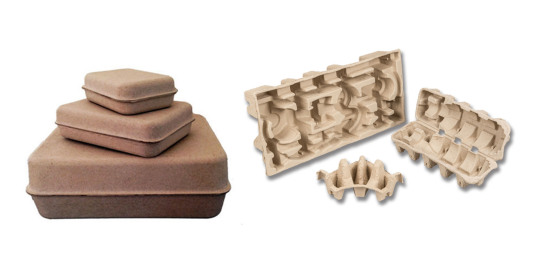
https://www.s-packaging.com/products/greenkraft/
http://www.molded-pulp-fiber.com/products-and-production
Moulded pulp packaging is typically made out of recycled paperboard and/or newsprint. However other natural fibrous materials such as straw and cornstarch can be used in the same process. It is used for protective packaging or for food service trays and beverage carriers. Other typical uses are end caps, trays, plates, bowls and clamshell containers. Moulded pulp packaging is very easy to recycle at the end of its lifecycle.
It is defined as a sustainable packaging by the sustainable packaging coalition. The main downside of this manufacturing methods is water use as it requires a lot of water to generate moulded pulp products.
Different types of molded pulp packages are available. The most common method commonly used is transfer moulding, which generates one smooth side and one slightly rougher side. This method is used to make egg cartons. Another method to generate a slightly higher quality product is thermoforming. This method makes for a very smooth higher quality finish. This method is used on products like the eco-store line and other higher end goods.
Paperboard
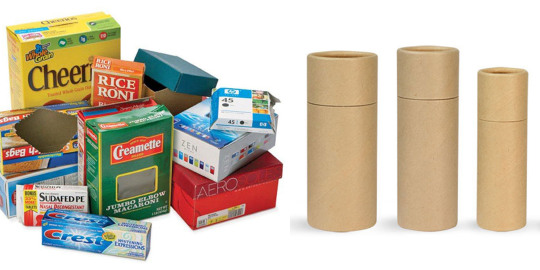
Paperboard is a thick paper-based material, it is foldable and rigid and is commonly used to make a huge variety of small packaging products. It is not easily suitable for larger boxes as it is not mechanically strong enough to support itself over wide surface areas. Paperboard can be made out of 100% recycled materials at the cost of strength and consistency. Paperboard has a typical recycle rate of 70%
Corrugate
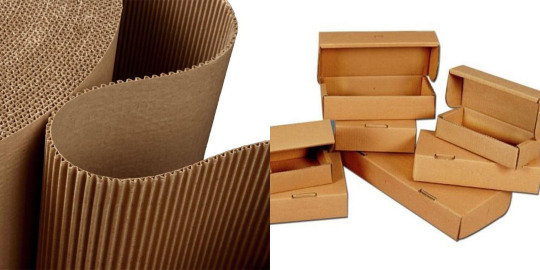
Corrugate is a mechanically strong paperboard based product. Corrugate is lightweight and cheap. 100% recycled corrugate is widely available and is a good option for sustainable packaging.
“[Corrugate] Cardboard is the big success story in recycled content.”
-SPC
Corrugated containers are the most recycled type of packaging, with a recycling rate routinely over 90%. Recycled corrugate has very few disadvantages when compared to virgin corrugate which is unique for recycled materials.
Plastic Packaging
For many food products, plastic remains a necessary evil. If we are to use plastic in our proposal we must examine if it is truly needed and what we can do to offset its use.
Polyethylene (PE) Film
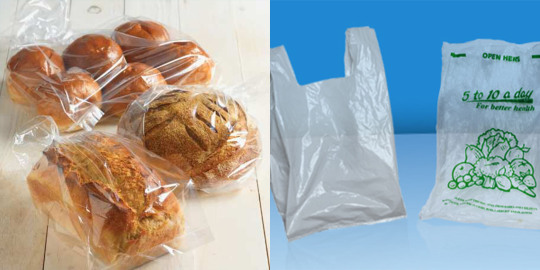
PE film is what the majority of plastic films products such as shopping bags and bread bags are made out of. PE film is harder to recycle than rigid plastics and is unable to have recycled content incorporated into it easily.
Companies such as Replas are able to recycle PE films but the output produced by their methods are unsuitable for our purposes.
Polystyrene (PS)
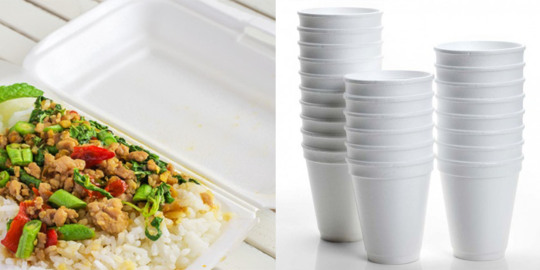
Recycled PS use in packaging is very limited as it is not as strong as virgin material and lacks a food safe recycled option.
PS is used in coffee cups and cheap takeaway packaging. It is most likely unable to be used four our proposal.
High-Density Polyethylene (HDPE)
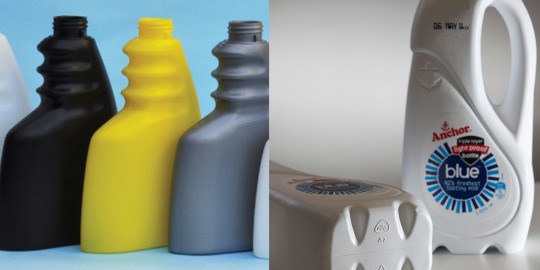
HDPE is used in containers such as milk jugs and cleaning products with opaque packaging. HDPE is easily recyclable.
Most recycled HDPE is made from used milk, water, juice, cosmetics, hair care, household cleaner, and detergent containers. This recycling stream is divided into two main categories of recycled HDPE: “natural,” which is partially transparent and made predominantly from milk jugs, and “mixed color,” made predominantly from opaque, colored HDPE bottles.
-SPC
The recycle rate for natural HDPE is around 30%, but for mixed colour it is half that as natural HDPE takes on pigment much better than mixed colour. A potential plasti option for our use case is using mixed colour products that are made from a higher percentage of recycled product.
Stone Paper (HDPE & Calcium Carbonate)
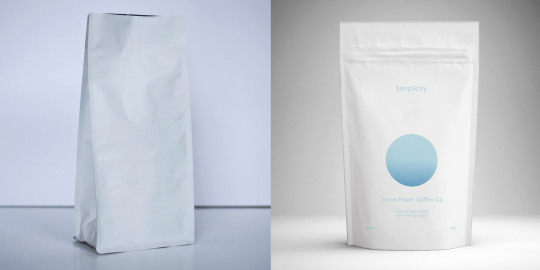
Stone paper is a relatively new development. It is made from crushed calcium carbonate and bonded with a small amount of HDPE. IT uses less water and contributes less CO2 than paper products and is able to be used to house food products such as coffee. It is also water resistant which can be advantageous when compared to paper. It is not biodegradable but is photo-degradable, which could be an issue as this kind of product contributes to microplastic pollution. However the bulk of the materials is Calcium Carbonate which has not harmful effects on the environment as it is a natural stone product.
Stone paper in New Zealand is supplied by Stone Paper Packaging in Auckland.
https://www.stonepaperpackaging.co.nz/
Polyethylene Terephthalate (PET)
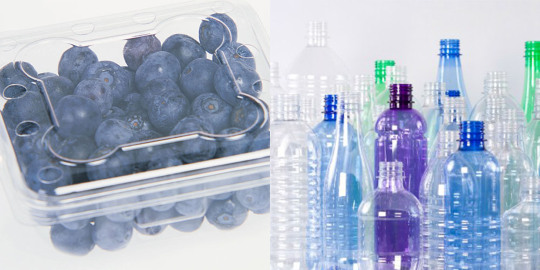
Recycling PET is very easy when compared to some other plastics, and unlike many plastics, products can be made from 100% recycled content as the plastic is able to be upgraded in the recycling process to near virgin levels. PET is used in products like clear water bottles and meat trays.
PET is generally regarded as an easy starting point for brands interested in using recycled plastics.
-SPC
PET is recycled in Wellington by plastics company Flight Plastics in Lower Hutt.
https://www.flightplastics.co.nz/
Resources
The majority of the above information came from the SPC’s Design for Recycled Content guide. This is an excellent resource for learning more about packaging materials and what materials will best suit various use cases.
The link to the guide can be found below.
https://recycledcontent.org/#
0 notes
Text
7 Day Healthy Meal Plan (June 29-July 5)
posted June 27, 2020 by Gina
A free 7-day, flexible weight loss meal plan including breakfast, lunch and dinner and a shopping list. All recipes include calories and updated WW Smart Points.
7-Day Healthy Meal Plan
I can’t believe it is almost July 4th!! In this week’s meal plan you will notice that there is more meat (beef) for the weekend than I usually include. This is for those that might be BBQ-ing for the holiday and serving a small crowd. If meat is too expensive or hard to find, you can swap it for chicken or fish. You can also check my recipes under the July 4th holiday tab. I have also included interchangeable meals for both Saturday and Sunday lunch and dinner meals so you can pick and choose or move things around to work for your schedule. Have a safe and happy 4th!
Why Should Everyone Meal Plan?
Meal planning is a great way to organize your meals for the week ahead. You also save time and money in the supermarket! And of course, planning ahead helps you stick to your goals!
About The Meal Plan
If you’re new to my meal plans, I’ve been sharing these free, 7-day flexible healthy meal plans (you can see my previous meal plans here) that are meant as a guide, with plenty of wiggle room for you to add more food, coffee, beverages, fruits, snacks, dessert, wine, etc or swap recipes out for meals you prefer, you can search for recipes by course in the index. You should aim for around 1500 calories* per day.
There’s also a precise, organized grocery list that will make grocery shopping so much easier and much less stressful. Save you money and time. You’ll dine out less often, waste less food and you’ll have everything you need on hand to help keep you on track.
Lastly, if you’re on Facebook join my Skinnytaste Facebook Community where everyone’s sharing photos of recipes they are making, you can join here. I’m loving all the ideas everyone’s sharing! If you wish to get on the email list, you can subscribe here so you never miss a meal plan!
Also, if you don’t have the Skinnytaste Meal Planner, now would be a great time to get one to get organized for 2020! There was a print error last year, but it’s perfect now! You can order it here!
youtube
THE DETAILS:
Breakfast and lunch Monday-Friday, are designed to serve 1 while dinners and all meals on Saturday and Sunday are designed to serve a family of 4. Some recipes make enough leftovers for two nights or lunch the next day. While we truly believe there is no one size fits all meal plan, we did our best to come up with something that appeals to a wide range of individuals. Everything is Weight Watchers friendly, I included the updated WW Blue SP for your convenience, feel free to swap out any recipes you wish or just use this for inspiration!
The grocery list is comprehensive and includes everything you need to make all meals on the plan. I’ve even included brand recommendations of products I love and use often. Cross check your cabinets because many condiments you’ll notice I use often, so you may already have a lot of them.
And last, but certainly not least, this meal plan is flexible and realistic. There’s plenty of wiggle room for cocktails, healthy snacks, dessert and dinner out. And if necessary, you can move some things around to make it work with your schedule. Please let me know if you’re using these plans, this will help me decide if I should continue sharing them!
MONDAY (6/29) B: 2 hard-boiled eggs (0B 4G 0P) with slice whole grain toast (3B 3G 3P) and a peach (0B 0G 0P) L: Turkey Club (7B 8G 7P) with 2 apricots (0B 0G 0P) D: Angel Hair Pasta with Zucchini and Tomatoes (7B 7G 7P) with a green salad* (1B 1G 1P) Totals: WW Points 18B 23G 18P, Calories 1,044**
TUESDAY (6/30) B: Banana Bread Muffin in a Cup (2B 2G 2P) with 1 cup mixed berries (0B 0G 0P) L: Cobb Salad in a Jar with Buttermilk Ranch (5B 9G 5P) D: Tzatziki Fish Tacos (6B 8G 6P) and Chickpea Salad with Cucumbers (1B 5G 1P) Totals: WW Points 14B 24G 14P, Calories 1,092**
WEDNESDAY (7/1) B: Banana Bread Muffin in a Cup (2B 2G 2P) with 1 cup mixed berries (0B 0G 0P) L: Cobb Salad in a Jar with Buttermilk Ranch (5B 9G 5P) D: Zesty Lime Grilled Chicken with Pineapple Salsa (4B 8G 4P) with ½ cup brown rice (3B 3G 0P) and Perfectly Grilled Zucchini (1B 1G 1P)
Totals: WW Points 15B 23G 12P, Calories 1,056**
THURSDAY (7/2) B: Breakfast BLT Salad (4B 6G 4P) L: Italian Chopped Salad (8B 8G 8P) with 2 ounces multigrain roll (3B 3G 3P) D: Broccoli Beef (7B 7G 7P) with 1 cup cauliflower “rice” (0B 0G 0P)
Totals: WW Points 22B 24G 22P, Calories 1,041**
FRIDAY (7/3) B: Breakfast BLT Salad (4B 6G 4P) L: Italian Chopped Salad (8B 8G 8P) with 2 ounces multigrain roll (3B 3G 3P) D: Grilled Crab Legs (0B 5G 0P) with corn on the cob (0B 3G 0P) and Summer Tomato Salad (1B 1G 1P)
Totals: WW Points 16B 26G 16P, Calories 1,022**
SATURDAY (7/4) B: Breakfast Pizza*** (5B 8G 5P) L: Burger Sliders (1B 1G 7P) with Rainbow Potato Salad (5B 5G 2P) and Red, White and Blueberry Trifle (8B 9G 8P) D: Steak Kebabs with Chimichurri (4B 4G 4P) with Summer Macaroni Salad with Tomatoes and Zucchini (3B 3G 3P)
Totals: WW Points 26B 30G 29P, Calories 1,018**
SUNDAY (7/5) B: Easy Bagel Recipe (3B 4G 3P) with 2 tablespoons light cream cheese (3B 3G 3P) and a peach (0B 0G 0P) L: Greek Pasta Salad (5B 5G 5P) and Grilled Pesto Chicken and Tomato Kebabs (4B 6G 4P) D: ORDER IN!
Totals: WW Points 15B 18G 15P, Calories 593**
*Green salad includes 6 cups mixed greens, 2 scallions, ½ cup each: tomatoes, cucumber, carrots, chickpeas and ¼ cup light vinaigrette. **This is just a guide, women should aim for around 1500 calories per day. Here’s a helpful calculator to estimate your calorie needs. I’ve left plenty of wiggle room for you to add more food such as coffee, beverages, fruits, snacks, dessert, wine, etc.
***Double dough (adjust baking powder accordingly) to make bagels Sunday.
*Google doc
Print Shopping List
Shopping List
Produce
5 medium peaches
2 medium apricots
2 dry pints strawberries
2 dry pints blueberries
2 (6-ounce) containers berries (your choice)
4 medium lemons
3 medium limes
1 small (5-ounce) Hass avocado
1 medium banana
1 small pineapple
2 medium heads garlic
1 small and 2 medium shallots
1 small jalapeno
1 ½ pounds multi-color baby potatoes
1 (1-inch) piece fresh ginger
1 small red bell pepper
1 medium orange bell pepper
1 small bunch celery
1 small carrot
5 medium ears corn
2 small and 4 medium zucchinis
1 medium and 1 large cucumber
1 small and 1 large English cucumber
2 medium bunches scallions
1 large head broccoli
1 medium head cauliflower (or 4 cups “riced”)
½ head green cabbage
1 small and 1 medium heads Romaine lettuce
1 head butter/Bibb lettuce
1 medium head Lacinato kale
1 (5-ounce) bag/clamshell mixed greens
1 small bunch fresh spinach
1 small bunch/container fresh dill
1 small bunch/container fresh mint
1 medium bunch/container fresh basil
1 small bunch/container fresh oregano (can sub another fresh herb for garnish in Greek Pasta Salad, if desired)
1 small bunch fresh Italian parsley
1 small bunch fresh cilantro
1 dry pint plus 3 (1-pound) packages cherry or grape tomatoes
1 small, 5 medium and 6 large beef steak, heirloom or vine-ripened tomatoes
3 medium and 1 large red onion
1 medium yellow onion
Meat, Poultry and Fish
1 package center-cut bacon
1 ounce sliced genoa salami
3 ounces sliced deli turkey breast (I like Boar’s Head)
¾ pound boneless, skinless white fish fillets (such as cod, halibut or branzino)
3 ¼ pounds boneless, skinless chicken breasts
2 pound 93% lean ground beef
1 pound flank steak/
1 ¼ pound sirloin or Angus beef steak
4 pounds king, snow or Dungeness crab legs (may be in frozen section)
Grains*
1 small loaf sliced whole grain bread
1 package angel hair pasta
1 package elbow pasta
1 package rotini, cavatappi or bow tie pasta
1 package small flour tortillas (such as Mission Street Taco)
1 package panko breadcrumbs
1 small package dry brown rice (or 2 cups pre-cooked)
1 (4-ounce) multigrain roll
1 package unbleached all-purpose flour
Condiments and Spices
Extra virgin olive oil
Canola oil
Cooking spray
Olive oil spray (or get a Misto oil mister)
Kosher salt (I like Diamond Crystal)
Pepper grinder (or fresh peppercorns)
Light mayonnaise
Crushed red pepper flakes
Light vinaigrette dressing (or make your own with ingredients in list)
Red wine vinegar
Garlic powder
Onion powder
Dried parsley
Dried basil
Oregano
Vanilla extract
Soy sauce*
Sesame oil
Sesame seeds
Yellow mustard
Dijon mustard
Optional bagel toppings: everything bagel seasoning, sesame seeds, poppy seeds, dried garlic flakes, dried onion flakes
Apple cider vinegar
Ketchup (optional for Burger Sliders)
Dairy & Misc. Refrigerated Items
1 dozen large eggs
1 small box butter (optional, for dipping Crab Legs)
1 (8-ounce) bag shredded part-skim mozzarella cheese
1 small wedge Parmigiano Reggiano
1 small chunk Feta cheese
1 small tub light cream cheese
1 pint 1% buttermilk
1 small package crumbled gorgonzola or bleu cheese (can sub 1 tablespoon feta or mozzarella in
Cobb Salad, if desired)
1 (32-ounce) tub nonfat plain Greek yogurt (I like Stonyfield)
1 (6-ounce) container 2% plain Greek yogurt
Frozen
1 small tub whipped topping (such as TruWhip)
Canned and Jarred
2 (15-ounce) can chickpeas
1 small can fat-free sweetened condensed milk (I use Borden Eagle)
1 medium jar dill pickle chips
1 small jar pitted Kalamata olives
1 small jar whole roasted red peppers
1 (15-ounce) can reduced sodium chicken or vegetable broth
Misc. Dry Goods
1 small package granulated sugar (optional, for Banana Bread Muffin)
Optional Banana Bread Muffin add-ins: mini chocolate chips, sprinkles, chopped walnuts, chopped pecans, hemp seeds
1 small package brown sugar
Baking powder
1 (4-ounce) package white chocolate or cheesecake instant pudding mix
Cornstarch (optional, for Broccoli Beef)
1 pre-made Angel Food cake
Non-Food Items
*You can buy gluten free, if desired
Print Shopping List
posted June 27, 2020 by Gina
Source link
قالب وردپرس
from World Wide News https://ift.tt/31BD8hZ
0 notes
Text
Meal Plan (October 21-October 27)
posted October 19, 2019 by Gina
A free 7-day flexible weight loss meal plan including breakfast, lunch and dinner and a shopping list. All recipes include calories and WW SmartPoints®.
Meal Plan
I hope everyone has had a great week! For those of you who host Halloween parties or have to send treats in for school, Skinny Mummy Cake Balls or Spooky Spider Halloween Cupcakes are sure to please!
If you’re new to my meal plans, I’ve been sharing these free, 7-day flexible healthy meal plans (you can see my previous meal plans here) that are meant as a guide, with plenty of wiggle room for you to add more food, coffee, beverages, fruits, snacks, dessert, wine, etc or swap recipes out for meals you prefer, you can search for recipes by course in the index. You should aim for around 1500 calories* per day.
There’s also a precise, organized grocery list that will make grocery shopping so much easier and much less stressful. Save you money and time. You’ll dine out less often, waste less food and you’ll have everything you need on hand to help keep you on track.
Lastly, if you’re on Facebook join my Skinnytaste Facebook Community where everyone’s sharing photos of recipes they are making, you can join here. I’m loving all the ideas everyone’s sharing! If you wish to get on the email list, you can subscribe here so you never miss a meal plan!
Also, if you don’t have the Skinnytaste Meal Planner, now would be a great time to get one to get organized for 2019! There was a print error last year, but it’s perfect now! You can order it here!
(embed)https://www.youtube.com/watch?v=X6RZHTD9AM4(/embed)
THE DETAILS:
Breakfast and lunch Monday-Friday, are designed to serve 1 while dinners and all meals on Saturday and Sunday are designed to serve a family of 4. Some recipes make enough leftovers for two nights or lunch the next day. While we truly believe there is no one size fits all meal plan, we did our best to come up with something that appeals to a wide range of individuals. Everything is Weight Watchers friendly, I included the updated Weight Watcher Freestyle Points for your convenience, feel free to swap out any recipes you wish or just use this for inspiration!
The grocery list is comprehensive and includes everything you need to make all meals on the plan. I’ve even included brand recommendations of products I love and use often. Cross check your cabinets because many condiments you’ll notice I use often, so you may already have a lot of them.
And last, but certainly not least, this meal plan is flexible and realistic. There’s plenty of wiggle room for cocktails, healthy snacks, dessert and dinner out. And if necessary, you can move some things around to make it work with your schedule. Please let me know if you’re using these plans, this will help me decide if I should continue sharing them!
MONDAY (10/21) B: Cinnamon Apple Yogurt Bowls (6) L: Chickpea Tuna Salad (0) over 2 cups mixed greens (0) D: Heather’s Buddha Bowl (7)
Totals: Freestyle SP 13, Calories 953*
TUESDAY (10/22) B: Cinnamon Apple Yogurt Bowls (6) L: Chickpea Tuna Salad (0) over 2 cups mixed greens (0) D: 1 ½ cups Crock Pot Chicken Taco Chili (0) with 2 tablespoons shredded cheddar (2) and 1 ounce avocado (1)
Totals: Freestyle SP 9, Calories 1,013*
WEDNESDAY (10/23) B: 2 hard-boiled eggs (0) and a banana (0) L: LEFTOVER 1 ½ cups Crock Pot Chicken Taco Chili (0) with 2 tablespoons shredded cheddar (2) and 1 ounce avocado (1) D: Roasted Spaghetti Squash with Meat Ragu (3) and Caesar salad** (2) with 1 ½ tablespoons Skinny Caesar Dressing (1)
Totals: Freestyle SP 9, Calories 962*
THURSDAY (10/24) B: 2 hard-boiled eggs (0) and a banana (0) L: LEFTOVER 1 ½ cups Crock Pot Chicken Taco Chili (0) with 2 tablespoons shredded cheddar (2) and 1 ounce avocado (1) D: LEFTOVER Roasted Spaghetti Squash with Meat Ragu (3) and Caesar salad (2) with 1 ½ tablespoons Skinny Caesar Dressing (1)
Totals: Freestyle SP 9, Calories 962*
FRIDAY (10/25) B: 1 cup plain yogurt (0) with ½ a chopped pear (0), 1 teaspoon honey (1) and 1 tablespoon chopped pecans (2) L: Avocado Toast (6) # with 1 hard-boiled egg (0) and 1 teaspoon everything bagel seasoning (1) and an apple (0) D: Garlicky Shrimp Stir-fry with Shiitakes and Bok Choy (1) with ¾ cup brown rice (5) Totals: Freestyle SP 16, Calories 1,040*
SATURDAY (10/26) B: Healthy Avocado Egg Salad and Salmon Sandwich (4) L: Asian Chicken Lettuce Wrap Salad (8) D: DINNER OUT!
Totals: Freestyle SP 12, Calories 558*
SUNDAY (10/27) B: Easy Bagel (3) with 2 tablespoons light cream cheese (3) and an orange (0) L: 1 ¼ cup Baked Potato Soup (7) D: Instant Pot Indian Chicken and Rice Pulao (7) with 1 cup cooked green beans (0) Totals: Freestyle SP 20, Calories 843*
*This is just a guide, women should aim for around 1500 calories per day. Here’s a helpful calculator to estimate your calorie needs. I’ve left plenty of wiggle room for you to add more food such as coffee, beverages, fruits, snacks, dessert, wine, etc.
**Salad includes 16 cups chopped romaine, 1 cup tablespoons croutons (1) and ½ cup shredded parmesan (1) for 8 servings # Includes 1 slice whole grain bread and 2 ounces avocado
**Google Doc
Print Shopping List
Shopping List
Produce
2 medium apples (any variety)
2 medium bananas
4 medium oranges
3 medium lemons
1 small pear (any variety)
4 heads baby bok choy
1 pound shiitake mushrooms
2 medium spaghetti squash (about 6 pounds total)
1 small butternut squash (or 2 cups pre-cut)
1 small cucumber
2 medium Russet potatoes
3 medium carrots
1 small bunch celery
1 small head of cauliflower
1 pound green beans
1 medium head garlic
1 small and 2 large heads Romaine lettuce
1 head Boston or Bibb lettuce
1 (5-ounce) bag/clamshell mixed baby greens
1 medium bunch fresh cilantro
1 bunch/container fresh chives
1 small bunch scallions
1 5-inch piece fresh ginger root
2 small (4-ounce) and 1 large (6-ounce) Hass avocados
1 pound broccoli florets
1 large red onion
3 small yellow onions
2 hot green chiles (optional, for Indian Chicken)
Meat, Poultry and Fish
3 pounds (6) boneless, skinless chicken breasts
1 pound 95% lean ground beef
1 pound ground chicken
1 small package center-cut bacon
1 ½ pounds large shrimp
4 ounces wild Nova salmon (lox)
Grains*
1 medium package dry brown rice (or 5 cups pre-cooked)
1 small package dry basmati rice
1 bag multigrain croutons
1 small loaf whole grain sliced bread
1 small package all-purpose or white whole wheat flour
Condiments and Spices
Extra virgin olive oil
Canola or vegetable oil
Cooking spray
Olive oil spray (or get a Misto oil mister)
Kosher salt (I like Diamond Crystal)
Pepper grinder (or fresh peppercorns)
Ground cinnamon
Cinnamon sticks
Nutmeg
Red wine vinegar
Reduced sodium taco seasoning (or ingredients to make your own)
Ground cumin
Cumin seeds (can sub ground cumin for seeds in Indian Chicken, if desired)
Chili powder
Bay leaves
Mirin
Hoisin
Sriracha sauce
Reduced sodium soy sauce*
Sesame oil
Crushed red pepper flakes
Light mayonnaise
Dijon mustard
Unseasoned rice vinegar
Honey
Everything Bagel seasoning
Cardamom pods (or ground cardamom)
Dairy & Misc. Refrigerated Items
1 18-pack large eggs
1 (32-ounce) container nonfat plain yogurt (I like Stonyfield)
1 (15-ounce) container nonfat plain Greek yogurt (I like Fage or Stonyfield)
1 (8-ounce) tub light cream cheese
1 small box butter
1 medium wedge fresh Parmesan cheese
1 (8-ounce) bag shredded reduced fat or regular cheddar cheese
1 (12-ounce) bottle 1% milk
1 small tub light sour cream
Frozen
1 (10-ounce) package corn kernels
Canned and Jarred
1 (15-ounce) can chickpeas
1 (28-ounce) can crushed tomatoes (I like Tuttorosso)
1 small can/jar anchovy filets
1 (8-ounce) can water chestnuts
1 (6-ounce) can wild albacore tuna
1 small jar capers
1 (15.5-ounce) can black beans
1 (15.5-ounce) can kidney beans
1 (8-ounce) can tomato sauce
2 (10-ounce) cans diced tomatoes with chilies
1 (4-ounce) can chopped green chili peppers
1 (15-ounce) can chicken broth
1 (8-ounce) carton chicken stock
Misc. Dry Goods
1 small package golden raisins (if buying from bulk bin, you only need 1 tablespoon)
1 medium bag chopped pecans
1 small package unsalted cashews (if buying from bulk bin, you need 2 tablespoons)
1 bottle white wine
Baking powder
Cornstarch
1 small package raw sugar (if buying from bulk bin, you need 1 ½ tablespoons)
*You can buy gluten free, if desired
Print Shopping List
posted October 19, 2019 by Gina
The post Meal Plan (October 21-October 27) appeared first on All Repices.
from WordPress https://ift.tt/2sYRKck via IFTTT
0 notes
Text
Plastic Packaging: 13 Most Asked Questions
What is Plastic Packaging
Plastic is one of the most used materials for packaging products worldwide. It is cost-effective and provides excellent protection to the packaged products. It is lightweight which makes it more convenient for transportation and reduces its carbon footprints too.
The plastic packaging industry was valued at $198 billion in 2017 and it is likely to reach $269.6 billion by the year 2025. The food and beverage industry will be the biggest driver for plastic packaging going ahead and is likely to grow at 4.2% annually.
Asia-Pacific is the largest market for plastic packaging followed by North America in the second spot. The current article provides answers to some of the most frequently asked questions pertaining to plastic packaging.
What is Plastic Packaging Called
There are different types of plastics used for packaging purpose. Some of the most commonly used plastic polymers for packaging are as follows:
High-Density Polyethylene (HDPE) is the most commonly used plastic polymer for packaging. They have good toughness and barrier properties and are ideal for packaging a variety of products. It has good chemical resistance so it is used for packaging of industrial and chemical-based products.
Low-Density Polyethylene (LDPE) is known for its toughness, flexibility, and transparency. It is a popular choice for packaging where heat sealing is used.
Polyethylene Terephthalate (PET) is colorless and tough and is used for making beverage bottles and other injection molded packaging containers. It is odorless, chemical resistant, and has good barrier properties which make it an excellent choice for the packaging of food products.
Polypropylene (PP) is a strong polymer with a high melting point which makes it ideal for packaging hot-fill liquids.
Poly Vinyl Chloride (PVC) is cheap and has good chemical resistance. It is used for blister packaging and clamshells.
How are Plastic Packaging Boxes Made
The plastic packaging boxes are made using the latest and state-of-the-art production technology. Most manufacturers are now moving towards using the advanced and superior bonding technique for manufacturing plastic boxes instead of the traditional ultrasonic and interlocking tabs.
The manufacturing materials also being used these days are sustainable and eco-friendly, which do not pose any serious threat to the environment.
How Much Does Plastic Packaging Boxes Cost
Plastic packaging boxes are one of the cheapest and most effective packaging solutions available. They offer you cost-effectiveness along with good durability and barrier properties. If you buy in bulk then a typical plastic packaging box will cost you less than $0.50.
These packaging boxes can be easily assembled by folding along the soft fold lines. Using a plastic packaging cost can mean that your packaging cost can be reduced to nearly 15% of the total product cost.
How to Recycle Plastic Packaging Materials
Plastic packaging these days are totally recyclable which is a great improvement over the non-recyclable and non-biodegradable plastic packaging used earlier.
It is estimated that in 2016, nearly 90% of the US population was in a position to recycle plastic bottles and 60% can recycle rigid plastic materials. Similarly, 45% of all the plastic packaging used in the UK was recycled in 2016. Plastic packaging materials can be recycled using mechanical recycling or by chemical recycling in which the plastic is further broken down into its constituent parts.
There are challenges and barriers to mechanical recycling of plastics as it is difficult and costly to collect, sort, and process plastic packaging for recycling.
This is where chemical recycling helps as it breaks down the longer molecular polymeric carbon chains into medium length carbon chains and into synthetic crude oil that can be used to make new plastics. Most plastic packaging bags and films are recycled into composite lumber.
Recycling is also cost-effective as it costs nearly $4,000 to recycle one ton of plastic packaging materials, while the selling price of it can be 2-3 times more than the recycling costs.
Where to Buy Plastic Packaging Boxes
You can buy plastic packaging boxes from a reputed and professional manufacturer. You need to do proper due diligence before finalizing the manufacturer as packaging is an important element of your product and you should ensure only the best quality packaging boxes for it.
You can start by identifying plastic packaging box manufacturers who make the type of plastic box which is best suited for your product. You should also check the minimum order quantity restrictions with them. If a manufacturer has a high minimum order barrier which is much more than your requirement, then it is better to look for other alternatives.
It is also important to assess the type of manufacturing infrastructure and capabilities possessed by the manufacturer. They should have the latest production equipment and should be able to meet the deadlines for production and supply of plastic packaging boxes.
They should also have a highly experienced and trained workforce which can ensure defect-free production of plastic packaging boxes. You should also negotiate the rates with different manufacturers and sellers to get the best rate for plastic packaging boxes.
Why Does My Cat Like Plastic Packaging
Cats are known to be playful and chew plastic packaging boxes. If the packaging box contains food items or groceries, then the lingering smell of food can entice cats into chewing it.
Cats are very sensitive to smell and thus can detect the smell of food items in the plastic packaging from a distance which makes them play with it. Some plastic packaging boxes are also coated with cornstarch, stearates, or contain traces of animal by-products like gelatin which make them attractive to cats.
Many cats are known to enjoy the crinkling sounds made by plastic packaging and thus they play with them. Some experts also believe that the smooth texture of plastic packaging is liked by cats on their tongue which is why they like licking and chewing it.
Some plastics may also contain particular chemicals which may mimic pheromones or other attractants which draws cats to play with them.
What Plastic is Used for Blister Packaging
Blister packaging is done by the thermoforming process. It involves heating a sheet of plastic to a temperature where it can be easily molded into any shape. Blister packaging has pre-formed pocket or shell inside of which the product is placed securely. The different types of blister packaging are as follows:
Face Seal blister packaging surrounds the product and is heat sealed into a piece of cardboard. The seal is only used on the flange and the rest of the cardboard remains uncovered. This is a common and inexpensive form of blister packaging.
Full face blister packaging involves the blister seal extending to the entire face of the cardboard. This provides better strength and durability to the packaging and protects the packaged product. It also comes with a hanging feature.
Full card blister packaging is similar to full face blister packaging with the only difference that instead of being sealed to the cardboard, its flanges are wrapped around it.
Clamshell packaging makes use of a blister card which is inserted and not sealed on the as in other types of blister packaging. It is more durable than the previously mentioned blister packaging forms and is costlier also.
Skin packaging is another form of blister packaging where a thin film is placed over the product on a blister card. The film is strong and clear and wraps around the product as its skin which is where it derives its name from.
The most commonly used plastic polymers for blister packaging are PET and PVC. They are strong and rugged in nature which provides excellent protection to the packaged product.
Blister packaging is used in packaging a wide range of products in industries like electronics, pharmaceuticals, consumer goods, personal care products, office supplies, etc.
What Type of Plastic is Food Packaging Made From
While using plastic for food packaging, it is important to ensure that the plastic polymer being used is approved for the same and is food-safe. In the US, the Food and Drug Administration (FDA) approves plastic as being food-safe which are known as food contact substances (FCS).
FDA defines FCS as substances which are intended to be used as a component of materials used in manufacturing, packaging, transporting, or holding food products.
PET is commonly used for food packaging. It is biologically inert if ingested, is dermally safe and is not hazardous if inhaled. PET is a stable plastic resin and it does not react with or contaminate the food products on coming in contact with it.
PP is also commonly used in reusable food containers. It is also used to manufacture single-serving food tubs. PP has a high melting point which makes it ideal for use in microwaves.
It does not react with the liquids, acids, or bases and is perfect for food packaging. HDPE is also considered safe for food packaging and is used for packaging of milk, fruit juices, butter containers, cereal box liners, food buckets used in cafeterias, etc.
Virgin HDPE is cleared by the FDA for food packaging. The FDA checks the use of recycled HDPE for food packaging on a case-to-case basis.
Why is Plastic Packaging Bad for the Environment?
Single-use plastic packaging is considered bad for the environment. Such packaging is meant to be used only once, after which it is disposed of by the end consumer. It is not recycled and either ends up being in landfills or even worse, in the ocean bed. It is estimated that nearly 50% of the plastic packaging is single use and is not recycled.
Such plastic packaging does not decompose easily and it can take up to 500 years or more for them to decompose in the landfills. Studies have also indicated that 8 million metric tons of plastic end up in the ocean each year which adds to the approximately 150 million tons of plastic weight already existing in the oceans.
This figure is only expected to increase considering our lifestyle and ways of disposing of plastic packaging waste. Scientists have claimed that in the next 10 years, the oceans will be littered with nearly 250 million tons of plastic waste and by 2050, there will be a more plastic waste in the oceans than fish.
This seriously damages the marine water ecosystem and also puts humans at risk of consuming these toxic plastic particles by means of seafood.
How to Reseal Plastic Packaging
Resealing plastic packaging box is the easiest way to protect the packaged product especially for food items. If the packaging does not provide you with ziplock feature and you do not have a ziplock bag handy with you, you can consider resealing the original package after using it.
You can use a matchstick or lighter and run it along the opened side of the packaging by pressing the two sides of the plastic packaging bag together. The packaging bag will be resealed and this will keep your food products fresh and safe for long.
How do You Recycle Plastic Water Bottle Packaging?
Plastic water bottles can be one of the easiest packaging materials to be recycled. The bottles are first collected from the end consumers and are sorted for removing any other materials like metals, glass, etc. The bottles are then sorted according to the plastic resin they are made of.
The bottles are then cleaned to remove any food residue or liquids. They are then shredded and converted into flakes which are then melted and formed into small pellets.
These pellets are then bundled and sold to other companies which can make use of the plastic to make other plastic products.
How to Open Plastic Packaging
Some plastic packaging like clamshell packaging is difficult to open without scissors and you should take proper precautions before opening it with your hands.
You can use a can opener or tin snips to open it safely. They can cut effortlessly through the hard clamshell packaging. You may also consider wearing protective gloves to protect against any injuries to your hands.
Another precaution is not to hold the packaging between your legs to stabilize it while opening as it can cause injuries. You should ensure that children are not around while trying to open sturdy clamshell packaging.
https://www.alppm.com/13-plastic-packaging-questions/
#boxdesign#clearplasticbox#clearppbox#marketing#packagingbox#polyethyleneterephthalate#pppackaging#pvcpackagingbox#retailpackaging#productpackaging
0 notes
Text
Sustainable Summer Vibes: Why Compostable Tableware Is the Real Main Character This Season
🌞 Aesthetic Picnics, Food Trucks, and Zero-Waste Goals
It’s not just the outfits that are getting an upgrade this summer — it’s the way we eat, party, and takeout. Across the U.S., from artsy pop-up markets in Portland to rooftop BBQs in Brooklyn, there’s a quiet revolution underway: single-use plastics are out, and biodegradable tableware is in.
Welcome to the season where compostable packaging like the cornstarch box isn’t just an eco-choice — it’s part of the vibe.
✨ Why Summer 2025 Is All About the Switch
We’ve hit a cultural moment where sustainability and aesthetics are finally in sync. No one wants a dreamy picnic reel interrupted by a crinkly plastic fork. Instead, we’re seeing:
Minimalist cornstarch food containers replacing plastic trays
Soft-toned compostable cups nestled next to wildflower bouquets
Picnic blankets layered with farm-to-table bites — all waste-free
People aren’t just eating clean. They’re living clean.

🍴 What’s the Deal with Cornstarch Packaging?
Cornstarch clamshells and containers are made from — you guessed it — corn starch. They’re strong enough to hold your hot vegan tacos, your sesame soba salad, or that gooey brownie with no leaks. And unlike plastic, they actually break down.
They look good, feel good, and let you walk away from your lunch without climate guilt. That’s the real power move of 2025.
🎉 From Rooftops to Festivals: Where It’s Trending
🌇 Urban Picnics
Everyone’s bringing their own basket — and in it? Locally made bites packed in cornstarch boxes. It’s the perfect match for your recycled denim and iced matcha aesthetic.
🎶 Music Festivals
Coachella might have the music, but the food scene? It’s ruled by vendors using cornstarch food containers and plant-based cutlery. When your snack is photogenic and biodegradable, you know you’re winning.
🏡 Backyard BBQs
It’s still burgers and lemonade — just with less trash. Compostable plates. Reusable drink jars. Friends who know where the compost bin is. Love to see it.
📦 Takeout That Matches Your Values
You shouldn’t have to choose between convenience and conscience. And this summer, you don’t have to. More local cafés and global food chains are switching to cornstarch clamshells and earth-friendly wraps. It’s takeout without the plastic hangover.
Imagine this: ✨ Avocado toast in a corn-based tray ✨ Cold soba in a fiber lid bowl ✨ Sticker says: “I’m compostable, just like your ex’s promises”
Satisfying and sarcastic. Tumblr-worthy? Definitely.

🌱 How It’s Helping the Planet (But Make It Fashion)
Let’s be honest — we all love looking good while doing good. And when you ditch plastic for cornstarch food containers, you’re not just making a cute lunchbox choice. You’re:
Reducing microplastics
Supporting renewable resources
Saying no to fossil fuel–based materials
Turning your brunch into an eco statement
And yes — it looks better in your feed, too.
📈 Why This Isn’t Just a Trend
Sure, it’s having a moment. But biodegradable packaging is also becoming the default. More cities are banning plastics. More festivals are going zero waste. And more people (hi, that’s us) care about what happens after the food is gone.
Cornstarch boxes are the new neutral. They go with every outfit, every dish, and every lifestyle choice that leans green.
🔁 What You Can Do
Next time you order out, ask if they have compostable options
Hosting a summer hangout? Stock up on cornstarch clamshells and eco forks
Share your aesthetic zero-waste setup — tag #GreenSummer
Support brands like Bioleader that offer compostable tableware in bulk for events or everyday use
🌻 Final Thought: Romanticize Your Summer, Sustainably
The picnic blanket. The thrifted dress. The iced oat latte. The biodegradable fork. This isn’t just an aesthetic — it’s a mindset. The kind that makes your summer not only look good, but do good.
So go ahead: unbox your vegan wrap in a cornstarch box, snap the pic, and toss it in the compost. Because this summer, sustainability isn’t a side dish — it’s the main course. 💚
#cornstarch box#cornstarch food containers#cornstarch clamshell#biodegradable packaging#aesthetic picnic ideas#summer sustainability#zero waste takeout#green lifestyle 2025#compostable cutlery#eco dining trends#plastic-free festivals#tumblr picnic#outdoor aesthetic picnic#Bioleader compostable#compostable picnic containers
0 notes
Text
Toxic Truth: 10 Key Differences Between BPA and PFAS—and the Safer Tableware You Should Use
Every day, billions of people unknowingly eat, drink, or cook with products that may contain BPA or PFAS. These synthetic chemicals, commonly found in plastic packaging and coated paper, pose serious health risks—yet public understanding remains limited.
If you've ever wondered what exactly makes BPA different from PFAS—and more importantly, what you should use instead—this article offers a detailed, science-backed explanation and a clear path forward with safe, plant-based packaging like bagasse and cornstarch tableware.
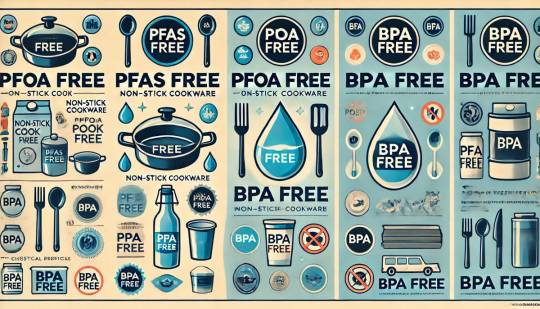
1. BPA is a single substance. PFAS are thousands.
BPA (Bisphenol A) is a single compound used to make hard plastics. PFAS (Per- and polyfluoroalkyl substances) refer to over 9,000 related chemicals used to repel grease, water, and heat.
Why It Matters:
PFAS are more difficult to ban or study collectively. That’s why many industries are shifting toward PFAS-free compostable packaging, especially those made from sugarcane fiber (bagasse) or corn starch.
2. BPA affects hormones. PFAS damage multiple organs.
BPA mimics estrogen and interferes with the body’s endocrine system. PFAS are associated with a wide range of issues, including:
Immune suppression
Liver and kidney damage
Certain cancers
Reduced vaccine response
3. BPA can break down. PFAS last for generations.
BPA degrades in soil and water over weeks to months. PFAS persist in the environment for decades or longer—earning the name "forever chemicals".
Switching to plastic-free tableware like bagasse bowls and cornstarch trays helps eliminate both plastic waste and PFAS persistence.
4. Food contact risks: Where they lurk
ProductBPA RiskPFAS RiskSafer AlternativesPlastic water bottlesHighLowStainless steel, glassFast food wrappersNoneHighPFAS-free paper or bagassePaper soup bowls (coated)NoneHighCornstarch-based soup containersBioplastic food traysVariesVariesUncoated fiber-based trays
5. Labeling is inconsistent
A product labeled “BPA-free” might contain BPS or BPF, which carry similar health concerns. Similarly, some items labeled “PFAS-free” may still contain short-chain PFAS or substitutes like GenX.
The most reliable solution? Use certified compostable tableware made from plant-based materials, tested for fluorine-free composition.
6. Exposure starts early—and is nearly universal
Studies show:
Over 90% of people have BPA in their urine
Over 97% have PFAS in their blood
These substances are now detected in umbilical cord blood, breastmilk, and household dust.
Your choice of cutlery, containers, and plates directly impacts your exposure—especially for children and pregnant women.
7. Government bans are increasing—but slowly
The EU bans BPA in baby bottles; PFAS bans are emerging across Denmark, California, and other regions.
Yet thousands of related compounds remain legally used in packaging, cookware, and textiles.
This is why many food brands and retailers are turning to bagasse tableware manufacturers and biodegradable cornstarch suppliers to future-proof their products.
8. Environmental footprint: A critical factor
Plastic-based items with BPA and coated paper with PFAS are major contributors to landfill buildup, soil leaching, and water pollution.
In contrast, bagasse and cornstarch packaging:
Decompose within 90 days in composting conditions
Leave no chemical residue
Support circular, zero-waste ecosystems
9. Safe alternatives are ready and scalable
You don’t have to wait for safer packaging—it’s already here.
✅ Bagasse trays are heat-resistant and microwave-safe ✅ Cornstarch clamshells offer oil and water resistance without synthetic linings ✅ Biodegradable cutlery made from plant-based PLA is strong and sleek ✅ All options are certified compostable and PFAS-free

10. Consumer pressure drives change
Every time you opt for biodegradable food containers over coated paper or plastic, you vote for cleaner air, water, and safer families.
Cafés, food trucks, schools, and health facilities are now demanding non-toxic packaging—and the market is responding with innovations in plant fiber materials, zero-fluorine coatings, and custom biodegradable designs.
Final Thoughts: Your Tableware Choices Matter
The verschil BPA en PFAS is more than a chemical breakdown—it’s a public health issue. Fortunately, you’re not powerless.
By choosing bagasse containers, cornstarch utensils, and non-toxic compostable bowls, you’re making a personal and planetary difference. It's time to go beyond “BPA-free” and embrace true safety, sustainability, and responsibility.
#verschil BPA en PFAS#BPA free tableware#PFAS free cutlery#bagasse vs plastic#cornstarch packaging safe#non toxic food containers#BPA and PFAS health risks#plant based disposable plates#bagasse trays microwave safe#certified compostable containers#PFAS free restaurant supplies#safe alternatives to plastic#zero waste packaging options#biodegradable sugarcane bowls#PFAS banned food packaging#BPI compostable utensils#eco friendly food service products#biodegradable clamshell boxes#safe tableware for kids#toxic free packaging solutions
0 notes
Text
7 Powerful Ways Takeaway Food Containers Are Redefining the Future of Packaging
In today’s fast-paced, convenience-driven world, takeaway food containers have become an inseparable part of modern lifestyles. Whether you’re grabbing lunch from your favorite café or ordering dinner to your doorstep, these containers are silently facilitating the global food movement. Yet beneath their simplicity lies a complex narrative of health, environment, material science, and sustainable innovation. This blog explores how takeaway food containers are transforming industries, shaping consumer habits, and driving the future of eco-conscious food packaging.
1. The Hidden Influence of Takeaway Food Containers
Takeaway food containers are more than mere vessels; they are silent influencers in consumer choices, waste streams, and sustainability strategies. In 2023 alone, over 250 billion takeaway containers were used globally—a number projected to rise with the growth of online food delivery services. Restaurants, food trucks, and cloud kitchens now rely heavily on single-use packaging to ensure food quality and hygiene.
This unprecedented rise invites scrutiny into what these containers are made of, how they affect the planet, and what innovations are shaping their evolution.
2. From Plastic to Plant-Based: Material Evolution
For decades, traditional plastic dominated the takeaway packaging market due to its low cost and structural strength. However, as awareness of plastic pollution and its long-term ecological effects has surged, industries have been pivoting toward sustainable alternatives.
Key Sustainable Alternatives:
Bagasse (Sugarcane Fiber): A by-product of sugar production, bagasse is 100% biodegradable and compostable, offering superior heat resistance and sturdiness.
Cornstarch Bioplastics: Made from renewable resources, these containers mimic plastic’s functionality without its environmental cost.
Kraft Paper: Recyclable, durable, and visually appealing, kraft paper is commonly used for boxes and wraps.
Scientific research confirms that compostable containers made from bagasse and cornstarch degrade 80–90% faster than petroleum-based plastics, making them a critical step toward reducing landfill waste.
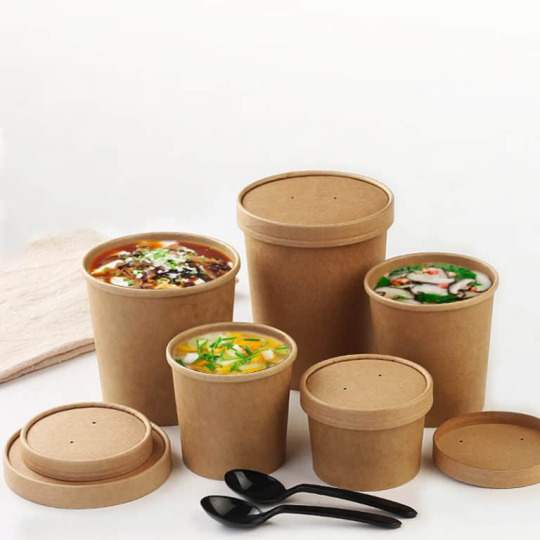
3. Health Risks: What’s in Your Food Container?
Many consumers don’t realize that traditional plastic takeaway containers can leach chemicals into food—especially when used for hot or greasy meals. BPA (Bisphenol-A), phthalates, and other toxic additives have been linked to endocrine disruption, reproductive issues, and even certain cancers.
Fortunately, most eco-friendly alternatives are naturally BPA-free. For instance, sugarcane bagasse and kraft paper contain no synthetic additives, making them safer choices for both hot and cold foods.
4. How Consumer Behavior Is Driving the Shift
As millennials and Gen Z consumers prioritize health, sustainability, and ethical brands, demand for environmentally responsible takeaway food containers is rising. According to surveys, 71% of customers say they’re more likely to return to a restaurant that uses eco-friendly packaging.
Restaurants and foodservice providers are catching on. Major brands have begun transitioning from plastic to compostable containers not only to reduce waste, but to meet consumer expectations and comply with new environmental regulations.
5. Case Studies: Real Impact in Real Kitchens
1. Urban Green Bistro (Los Angeles)
Switched from plastic to bagasse clamshell containers. Customer satisfaction scores increased by 18%, and waste pickup frequency dropped by 30%.
2. Bioleader’s Product Deployment
Bioleader’s sugarcane-based containers have been adopted by over 1,000 restaurants across Europe and Asia. Their certified compostable containers help businesses meet regulatory standards while strengthening eco-branding.
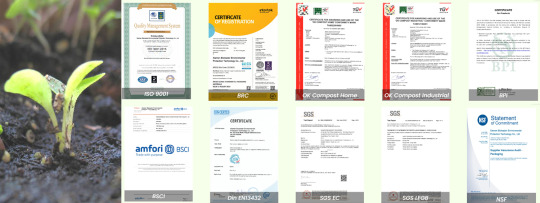
3. DeliveryHub (UK-based food delivery platform)
Launched a “Green Packaging Pledge,” requiring restaurant partners to transition to biodegradable or compostable containers. As a result, platform engagement grew by 12% in eco-conscious customer segments.
6. Economic Value vs. Environmental Cost
While sustainable takeaway food containers may initially appear costlier, their long-term benefits outweigh the expense. Businesses report:
Lower waste management costs
Improved brand loyalty
Compliance with regional plastic bans (increasing globally)
Furthermore, studies indicate that investing in sustainable packaging can lead to a 25% increase in net customer retention.
7. The Future: Smart and Circular Packaging
The future of takeaway food containers lies in smart, circular solutions. Researchers are developing edible packaging, self-decomposing containers, and blockchain-based traceability for packaging lifecycle tracking.
Meanwhile, governments are stepping in. More than 40 countries have announced policies banning or taxing non-recyclable food containers, further accelerating the transition to compostable alternatives.
Conclusion: Why It Matters More Than Ever
Takeaway food containers are no longer just a matter of convenience. They now reflect your brand’s values, environmental commitment, and consumer promise. By choosing compostable, plant-based materials like bagasse, cornstarch, and kraft paper, food businesses are making bold steps toward a cleaner, healthier future.
These containers are not just changing how we eat—they're changing the world. And that’s something worth packaging with purpose.
#takeaway food containers#disposable food packaging#eco-friendly take out containers#compostable food boxes#biodegradable takeaway packaging#BPA-free containers#bagasse containers#cornstarch containers#kraft paper food packaging#sustainable restaurant supplies#plastic alternative food packaging#eco packaging manufacturer#compostable takeaway boxes#food delivery containers#restaurant to-go containers#food grade takeaway boxes#biodegradable clamshell#plastic-free food packaging#green foodservice products#reusable vs disposable containers
0 notes
Text
🥡 Can I Microwave a Paper Box? The Eco Truth You Didn’t Know
Ever stared at your leftover takeout and thought: "can i microwave paper box ?" And it turns out… the answer isn’t always yes.
Let’s break it down—because not all paper boxes are what they seem, and reheating your lunch shouldn’t come with regrets (or toxins).

🔥 TL;DR – Quick Facts First
✅ Uncoated paper boxes? Usually safe.
✅ Bagasse containers (made from sugarcane)? Microwave legends.
❌ Boxes with plastic or wax lining? Nope.
❌ Shiny or water-resistant paper? Sketchy.
👀 Look for a “Microwave Safe” label. When in doubt, don’t nuke it.
📦 What’s Really in Your Takeout Box?
Let’s talk paper types:
1. Bagasse (sugarcane fiber)
Sturdy. Compostable. Microwave-safe. I’ve used these for curry, rice, even soup. They don’t warp. They win.
2. Molded Fiber
Made from recycled paper. Surprisingly strong. Good for dry meals or sandwiches. Sometimes microwave-safe (check the label).
3. Kraft Boxes
Brown and minimal = aesthetic, right? BUT many are lined with thin plastic or PLA (a bioplastic) to resist grease. That lining might melt in the microwave.
🧪 The Science (but make it digestible)
Studies have found that PFAS—a chemical found in grease-proof paper—can leach into food when microwaved. Yep, even “eco” takeout boxes can have these.
On the flip side, uncoated bagasse or cornstarch-based bowls = safe, biodegradable, and microwave-approved.
🍱 My Go-To Microwave-Friendly Eco Options:
Bagasse clamshells → Great for pasta, rice, messy foods
Cornstarch soup bowls → Can handle hot liquids
Molded fiber trays → Best for dry meals or reheating snacks
Compostable forks & spoons → Go all in with plant-based cutlery
Bonus: They won’t melt into your food.
⏱️ Microwave Tips (Trust Me, I’ve Learned)
Heat in 1-minute intervals
Always leave the lid open a crack (no steam bombs, please)
No empty containers—they can spark
If it smells weird or warps? Stop. Don’t eat it.
🧁 A Case I Love: Bento Done Right
There’s this vegan meal box company in Singapore that uses bagasse boxes + sugarcane lids. You microwave the whole thing. Eat. Compost the box. No plastic. No guilt. Genius.
🌍 Final Take: Reheat Without Regret
So yeah, you can microwave some paper boxes. But only if they’re:
Uncoated
Labeled microwave-safe
Made from natural fiber like sugarcane or molded pulp
Eco-packaging is leveling up—and with better materials, we can eat clean, heat smart, and ditch plastic for good.

#can I microwave paper box#microwave tips#eco friendly packaging#bagasse container#biodegradable takeout#sustainable living#green eating#meal prep tips#zero waste food#compostable packaging
0 notes
Text
Top 10 Sugarcane Bagasse Tableware Manufacturers & Suppliers in China (2025)
Introduction
In the global transition toward sustainable foodservice solutions, biodegradable food packaging is quickly replacing conventional plastic. Among the most promising materials is sugarcane bagasse—a byproduct of sugarcane processing that is lightweight, strong, and fully compostable. As eco-regulations tighten and consumer awareness grows, China has emerged as a major production hub for compostable tableware. This article outlines the top 10 sugarcane bagasse tableware manufacturers in China for 2025.
Types of Biodegradable Food Packaging
Biodegradable packaging comes in a range of materials designed to break down naturally after disposal. Key types include:
Sugarcane Bagasse – Molded pulp from sugarcane fiber, used for plates, bowls, and trays
Cornstarch – Often used for cutlery, straws, and containers
Paper & Kraft Paper – Renewable but often coated, requiring chemical treatment
PLA & CPLA – Bioplastics derived from plant starch, often used in cups and lids
Shared characteristics:
Fully compostable (some home, some industrial)
Plant-based and fossil-free
Safe for food contact
Often heat- and cold-resistant
Top 10 Biodegradable Food Packaging Manufacturers in China
Here are the top 10 suppliers of sugarcane bagasse tableware in China, based on product quality, certifications, market reputation, and sustainability focus:
RankCompany NameMain Products1Xiamen Bioleader Environmental Protection Technology Co., Ltd.Sugarcane bagasse tableware, cornstarch containers2GangXuan Eco-PackBagasse plates, clamshells, trays3ZX PackingSugarcane bagasse cutlery, plates4Hefei Craft Tableware Co., Ltd.Biodegradable plates, bowls, trays5Shenglin PackagingBagasse tableware, paper cups, boxes6MVI ECOPACKBagasse plates, disposable trays7Lafu PackagingSugarcane party supplies8Guangzhou Huaheng Plastic Products Co., Ltd.Oval plates, eco disposable tableware9Shanghai EGS Industry Co., Ltd.Biodegradable plates and cutlery10Wuhan Heepack Environmental Tech Co., Ltd.Bagasse plates, bowls, paper cups
1. Xiamen Bioleader Environmental Protection Technology Co., Ltd.
Main Products:
Sugarcane bagasse tableware
Cornstarch cutlery and boxes
Paper bowls and compostable trays
Location:
Xiamen, Fujian Province, China
Scale:
101–200 employees
Serving both OEM/ODM clients globally
Certifications:
FDA, BPI, OK Compost, ISO9001
Impact: Bioleader is widely recognized for its PFAS-free, plastic-free bagasse packaging and deep export experience. It partners with foodservice chains and distributors globally to deliver consistent, sustainable alternatives.
Contact Information:
Xiamen Bioleader Environmental Protection Technology Co., Ltd.
Address: No.39 Xinglong Road, Xiamen, Fujian, China
Contact: Junso Zhang (Mr.)
Website:www.bioleaderpack.com

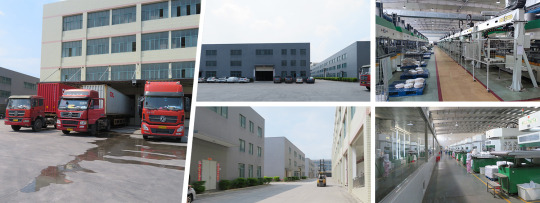
2. GangXuan Eco-Pack
Main Products:
Bagasse trays, plates, and clamshells
Location:
Guangxi, China
Scale:
300+ employees, five production lines
Impact: A rapidly growing enterprise with extensive global supply capabilities and advanced molding technologies.
3. ZX Packing
Main Products:
Bagasse plates, cups, and eco cutlery
Location:
China
Scale:
Mid-sized operation with skilled engineers
Impact: Known for customizable sugarcane fiber products in bulk orders, especially for Western markets.
4. Hefei Craft Tableware Co., Ltd.
Main Products:
High-durability bagasse plates and trays
Location:
Hefei, Anhui Province
Scale:
500+ employees, listed company
Impact: Pioneer in biodegradable innovation and large-scale delivery to hospitality sectors across Asia and Europe.
5. Shenglin Packaging
Main Products:
Sugarcane bagasse and kraft paper packaging
Location:
Ningbo, Zhejiang Province
Scale:
400+ employees
Impact: Combines print branding and packaging innovation for retailers and takeaway brands.
6. MVI ECOPACK
Main Products:
Compostable sugarcane trays and containers
Location:
Suzhou, Jiangsu Province
Scale:
250+ employees
Impact: A design-forward factory producing heat-resistant bagasse lines for bakery, deli, and airline service.
7. Lafu Packaging
Main Products:
Event-grade bagasse and compostable partyware
Location:
Guangzhou
Scale:
200 employees
Impact: Trendy, vibrant line of biodegradable event supplies with bulk availability for export.
8. Guangzhou Huaheng Plastic Products Co., Ltd.
Main Products:
Oval biodegradable plates and serving trays
Location:
Guangzhou
Scale:
150 employees
Impact: An early mover transitioning from plastic to bagasse to meet global demand for eco-compliance.
9. Shanghai EGS Industry Co., Ltd.
Main Products:
Sugarcane bagasse cutlery and round plates
Location:
Shanghai
Scale:
100+ staff
Impact: Supplies retailers across Europe with compostable solutions approved under EN13432 standards.
10. Wuhan Heepack Environmental Tech Co., Ltd.
Main Products:
Biodegradable sugarcane bowls and cup lids
Location:
Wuhan, Hubei Province
Scale:
120+ employees
Impact: Efficient mid-scale producer of molded pulp tableware, expanding toward global OEM partnerships.
Scientific Support for Bagasse Tableware
According to multiple environmental studies, sugarcane bagasse products:
Break down in under 90 days in composting conditions
Are 100% PFAS-free, BPA-free, and non-toxic
Emit 70–90% less CO₂ compared to petroleum plastics
Require no deforestation, as bagasse is an agricultural waste material
Case Insight: One major chain store in Asia reduced its packaging waste by over 90% in just 12 months by switching entirely to bagasse packaging from Bioleader.
Conclusion
With growing demand for green alternatives, sugarcane bagasse tableware is transforming the foodservice and retail packaging landscape. From high-output exporters like Bioleader to specialized innovators like MVI and Lafu, China’s biodegradable packaging sector is leading the world in affordability, quality, and eco-compliance. Choosing certified, compostable packaging not only aligns with regulatory trends but also builds sustainable brand value.
0 notes
Text
Top 10 Biodegradable Tableware Manufacturers & Suppliers in China (2025)
Introduction to Biodegradable Tableware
In response to escalating environmental concerns and the global movement towards sustainability, biodegradable tableware has emerged as a pivotal solution in the foodservice industry. These eco-friendly alternatives to conventional plastic utensils and dishes are designed to decompose naturally, thereby mitigating pollution and reducing landfill waste. The adoption of biodegradable tableware not only aligns with environmental regulations but also caters to the growing consumer demand for sustainable products.

Types, Materials, and Characteristics of Biodegradable Tableware
Types of Biodegradable Tableware
Biodegradable tableware includes:
Plates and Bowls: For serving hot meals and soups.
Cups and Lids: Suitable for both cold and hot beverages.
Cutlery: Spoons, forks, and knives for disposable use.
Food Containers and Trays: Used for takeaway, meal prep, and packaging.
Materials Used
Sugarcane Bagasse: A fibrous by-product of sugar production. It's sturdy, heat-resistant, and fully compostable.
Cornstarch: Molded into cutlery and containers; biodegradable and non-toxic.
PLA (Polylactic Acid): A plant-based bioplastic, typically used for transparent cups and lids.
Bamboo & Wood: Fast-growing renewable resources used for cutlery and elegant presentation items.
Key Characteristics
100% biodegradable and compostable.
Oil- and water-resistant.
Microwave- and freezer-safe.
Certified food-safe and toxin-free.
Top 10 Biodegradable Tableware Manufacturers & Suppliers in China
China has rapidly become the global leader in biodegradable tableware production. Below is a curated list of the top manufacturers in 2025: RankCompany NameMain Products1BioleaderSugarcane bagasse tableware, cornstarch cutlery2MVI ECOPACKCompostable packaging solutions3You ChengBamboo-based disposable plates4Hyde GroupPLA-based cutlery and food containers5EcolinkCustomizable eco-friendly packaging6GREENJOYSugarcane trays, clamshells7HongtaiKraft paper and food-safe packaging8HongshengSugarcane fiber plates and bowls9OWNFOLKWooden cutlery and food containers10UGreenPakBioplastics and molded pulp products
1. Bioleader
Brand: Bioleader Main Products: Sugarcane bagasse clamshells, bowls, plates, trays, cups, and cornstarch cutlery Location: Xiamen, Fujian Scale: 150+ employees Certifications: ISO9001, FDA-SGS, EN13432, ASTM6400, OK Compost, BPI, BRC, NSF Market Influence: Bioleader has become a preferred supplier for international foodservice chains and airlines, known for strict quality control and sustainability leadership.

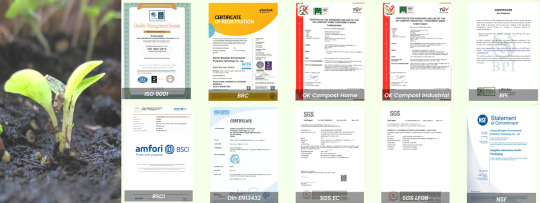
Contact Info: Website: www.bioleaderpack.com Company: Xiamen Bioleader Environmental Protection Technology Co., Ltd Address: No.39 Xinglong Road, Xiamen, Fujian, China Contact: Junso Zhang (Mr.)
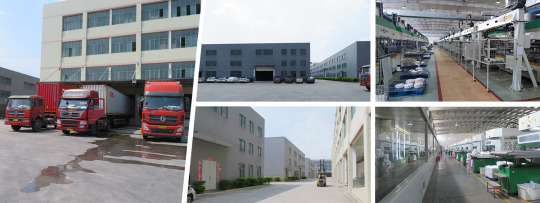
2. MVI ECOPACK
Main Products: Compostable packaging including PLA-lined cups, food trays, and utensils Location: Zhejiang Scale: ~100 employees Highlights: Offers sustainable packaging made from annually renewable materials. Known for batch consistency and custom printing capabilities.
3. You Cheng
Main Products: Disposable bamboo plates and trays, custom foodservice packaging Location: Guilin, Guangxi Scale: ~80 employees Highlights: Focuses on biodegradable bamboo fiber tableware with high oil resistance and aesthetic finish.
4. Hyde Group
Main Products: PLA cups, bowls, and lids for cold and hot beverages Location: Henan Province Scale: ~300 employees Highlights: Known for mass production capacity and R&D in PLA materials, serving large-scale distributors and OEM clients.
5. Ecolink
Main Products: Bagasse containers, wooden utensils, and biodegradable paper straws Location: Fujian Province Scale: ~120 employees Highlights: Offers full packaging solutions including color printing, private labeling, and FSC-certified raw materials.
6. GREENJOY
Main Products: Sugarcane-based clamshell boxes, plates, trays Location: Quanzhou, Fujian Scale: ~150 employees Highlights: Large production capacity and exports to over 40 countries, including strict European compostability certifications.
7. Hongtai
Main Products: Kraft paper boxes, takeaway lunch trays Location: Hebei Province Scale: 200+ employees Highlights: Strong in food-safe, greaseproof paper technology and widely used in bakery and fast-food chains.
8. Hongsheng
Main Products: Sugarcane pulp tableware, bowls, meal boxes Location: Wenzhou, Zhejiang Scale: ~120 employees Highlights: Specializes in affordable yet premium biodegradable ware; high-volume exporter to Southeast Asia and Europe.
9. OWNFOLK
Main Products: Disposable cutlery, plates, biodegradable meal boxes Location: Xiamen, Fujian Scale: ~80 employees Highlights: Offers FSC and BSCI-compliant manufacturing, focused on wholesale custom packaging.
10. UGreenPak
Main Products: Bioplastic utensils, bagasse trays, biodegradable packaging Location: Guangdong Scale: ~100 employees Highlights: Uses renewable raw materials, offers innovative molded fiber packaging, and targets the premium eco-market.
Scientific Data & Expert Insights on Biodegradability
Scientific studies validate the environmental benefits of biodegradable tableware:
A 2022 report from the Journal of Cleaner Production shows that bagasse-based packaging emits 65% less CO₂ than petroleum-based plastics over its lifecycle.
According to a UN Environment Programme review, compostable packaging has the potential to reduce microplastic pollution by up to 90% in marine ecosystems.
Bioleader's partnership with a major Asian airline reduced plastic usage by 50% in inflight meals by switching to sugarcane trays.
Industry experts project that biodegradable packaging will grow at 13% CAGR from 2024–2030, driven by consumer awareness and government regulations.
Conclusion
As sustainability becomes a global priority, choosing biodegradable tableware is not only a responsible environmental decision but a competitive business advantage. The ten manufacturers highlighted here represent China’s strongest players in eco-packaging for 2025, delivering quality, compliance, and innovation to global markets.
#biodegradable tableware#eco friendly packaging#compostable utensils#sugarcane bagasse products#biodegradable food containers
0 notes
Text
MVI ECOPACK - Eco Friendly Food Packaging Specialist
MVI-ECOPACK was founded in 2010, a tableware specialist, with offices and factories in mainland China, more than 11 years of export experience in the field of environmentally friendly packaging. We are dedicated to offering our customers good quality and innovations at affordable prices.
Our products are made from annually renewable resources like corn, sugarcane, and wheat straw, some of which are by-products of the agriculture industry. We use these materials to make sustainable alternatives to plastics and Styrofoam.
Our eco-friendly products mainly cover disposable food containers, bagasse plates & bowls, sugarcane clamshell, food trays, PLA clear cups/paper cups with lids, water-based coating paper cups with lids, CPLA lids, take-out boxes, drinking straws, and biodegradable CPLA cutlery, etc., all are made of sugarcane pulp, cornstarch and wheat straw fiber which makes the tableware 100% compostable and biodegradable. In addition, we also provide compostable shopping bags, trash bags and dog poop bags.
All our products (including packaging cartons and environmentally-friendly bags) can be customized and support OEM service.
Our team and designers continuously create new items for our product lines and which can be customized according to buyer’s requirements. We aim to provide high quality biodegradable and compostable disposable tableware to our customers at factory price.
We have 42 sets fully automatic production equipment and 120 sets semi-automatic production equipment, with an area of 32,000 square meters and more than 12000 workers, the daily production capacity is over 65 Tons. Our customers are all over South Africa, Europe, North America and so on, and our products are deeply trusted by customers.
In addition, our factory has professional R&D team and a sound management system. We obtained ISO9001 quality management system certification and ISO14001 environmental management system certification. All our products are strictly certified to meet ISO, BRC, OK COMPOST, FDA, SGS, BPI and other standards.
MVI-ECOPACK was founded in 2010, a tableware specialist, with offices and factories in mainland China, more than 11 years of export experience in the field of environmentally friendly packaging. We are dedicated to offering our customers good quality and innovations at affordable prices.
Our products are made from annually renewable resources like corn, sugarcane, and wheat straw, some of which are by-products of the agriculture industry. We use these materials to make sustainable alternatives to plastics and Styrofoam.
0 notes